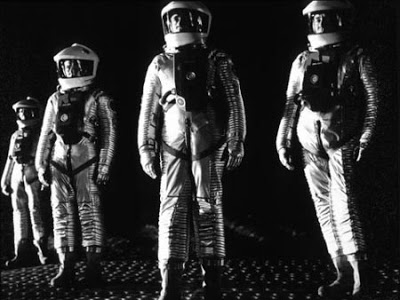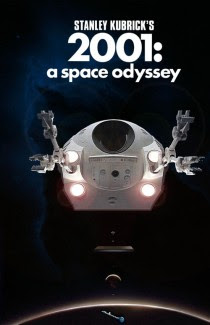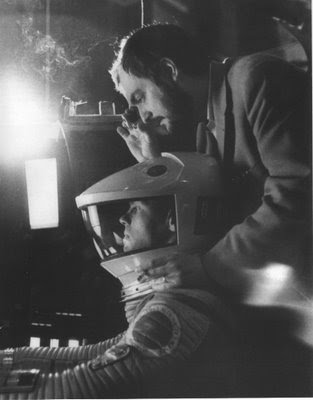A LOOK BACK AT A FILM THAT LOOKED AHEAD
September 13, 2010 | Source: Monroe Gallery of Photography
John Jay: 2001: A Space Odyssey vintage gelatin silver print
The historic Lensic Theater presents a special screening this Friday, September 17, of Stanley Kubrick's classic "2001: A Space Odyssey".
Almost a decade before Star Wars, Close Encounters of the Third Kind, and E.T.: The Extra-Terrestrial, 2001: A Space Odyssey proved to be one of the most influential sci-fi films of all time.
The film's special effects, ethereal soundtrack, scientific realism and enduring icons - the giant black monolith and the intelligent computer HAL - influenced directors from George Lucas and Steven Spielberg to Sydney Pollack.
Director Stanley Kubrick co-wrote the screenplay with futurist author Arthur C. Clarke. Kubrick refers to 2001: A Space Odyssey as "a mythological documentary." The discovery of a mysterious monolith by prehistoric man appears to trigger the evolutionary process from primitive ape-man to futuristic space-traveler. As time unfolds, man becomes dwarfed by his own technological creation, leading to a power struggle between man and machine.
Stanley Kubrick Directing
First released to mixed reviews in 1968, 2001: A Space Odyssey, is now recognized by critics and audiences as one of the greatest films ever made. The opening sequence featuring Richard Strauss's symphonic poem, Also sprach Zarathustra, is one of the most famous film openings of all time. The musical score also includes Johann Strauss' Blue Danube waltz, which accompanies the graceful movement of satellites in outer space.
John Jay: 2001: A Space Odyssey vintage gelatin silver print
Related: "Making Movies", an exhibition of photographs from the sets of classic films.




.jpg)